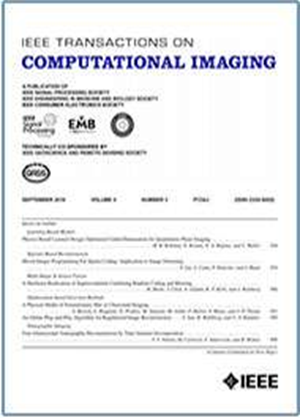SLBL-PU: Shadow-Based Layer-By-Layer Phase Unwrapping for Efficient 3D Measurement
IF 4.8
2区 计算机科学
Q2 ENGINEERING, ELECTRICAL & ELECTRONIC
引用次数: 0
Abstract
Phase-shifting (PS) based structured light technology shows excellent 3D perception performance. However, it requires projecting a extensive array of patterns, imposing constraints on the measurement space, or embedding additional signals for phase unwrapping (PU), leading to motion artifacts and low robustness. To surmount these challenges, we propose a shadow-based, layer-by-layer phase unwrapping (SLBL-PU) method, which enables absolute phase recovery for deep objects without the need for any supplementary patterns. In the initial phase, attention is focused on a novel truncation feature within the local phase, facilitating the use of iterative PUs to derive the modulated phase. Inspired by shading theory, in the second phase, the absolute phase is restored based on the geometric relationship between the imaging system and the object shadows. Additionally, by incorporating a time-division multiplexing strategy, the efficiency of 3D reconstruction in dynamic scenes is further tripled. In experiments involving different depths, phase modulation, complex colored, and dynamic scenes, the proposed method demonstrated superior performance. Specifically, in static environments (0 mm/s), the proposed approach yields greater measurement accuracy (0.020 mm and 0.195 mm) than does the traditional spatial domain modulation (PS) method. In dynamic environments (15 mm/s), the proposed approach theoretically utilizes at least three patterns, with a defect rate lower than that of the nine-pattern, three-frequency PS method (8.58% and 14.68%).SLBL-PU:基于阴影的逐层相位展开,用于高效的3D测量
基于相移(PS)的结构光技术具有优异的三维感知性能。然而,它需要投射大量的模式阵列,对测量空间施加限制,或者为相位展开(PU)嵌入额外的信号,导致运动伪影和低鲁棒性。为了克服这些挑战,我们提出了一种基于阴影的逐层相位展开(SLBL-PU)方法,该方法可以在不需要任何补充模式的情况下对深层物体进行绝对相位恢复。在初始阶段,重点关注局部相位内的新颖截断特征,便于使用迭代pu推导调制相位。在第二阶段,受阴影理论的启发,根据成像系统与物体阴影之间的几何关系恢复绝对相位。此外,通过结合分时复用策略,动态场景的三维重建效率进一步提高了两倍。在涉及不同深度、相位调制、复杂色彩和动态场景的实验中,该方法表现出优异的性能。具体来说,在静态环境(0 mm/s)下,与传统的空间域调制(PS)方法相比,该方法的测量精度(0.020 mm和0.195 mm)更高。在动态环境(15 mm/s)下,该方法理论上至少使用了三种模式,其缺缺率低于九模式三频率PS方法(8.58%和14.68%)。
本文章由计算机程序翻译,如有差异,请以英文原文为准。
求助全文
约1分钟内获得全文
求助全文
来源期刊

IEEE Transactions on Computational Imaging
Mathematics-Computational Mathematics
CiteScore
8.20
自引率
7.40%
发文量
59
期刊介绍:
The IEEE Transactions on Computational Imaging will publish articles where computation plays an integral role in the image formation process. Papers will cover all areas of computational imaging ranging from fundamental theoretical methods to the latest innovative computational imaging system designs. Topics of interest will include advanced algorithms and mathematical techniques, model-based data inversion, methods for image and signal recovery from sparse and incomplete data, techniques for non-traditional sensing of image data, methods for dynamic information acquisition and extraction from imaging sensors, software and hardware for efficient computation in imaging systems, and highly novel imaging system design.
 求助内容:
求助内容: 应助结果提醒方式:
应助结果提醒方式:


